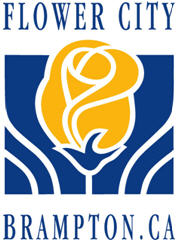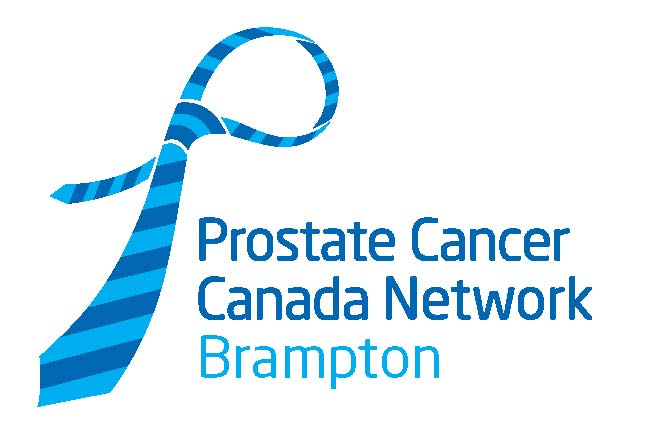
October General Meeting
|
|
Oct
14th 2008
“Management of Urologic Malignancies
with Minimally Invasive Techniques”
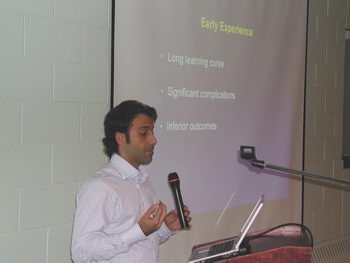
Dr. Antonio (Tony) Finelli
MD, MSc, FRCSC
Division of Urology Minimally Invasive Surgery,
Department of Surgical Oncology, Princess Margaret Hospital
Dr. Antonio Finelli
gave a very informative presentation on Laparoscopic Prostatectomy,
Robotic Assisted Prostatectomy and HIFU ( High Intensity Focused
Ultrasound ) techniques.
The presentation was integrated with excellent slide and video aids to
give the group some
excellent insights into three of the least invasive treatments for
Prostate Cancer.
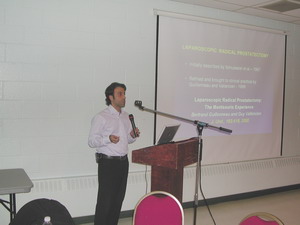
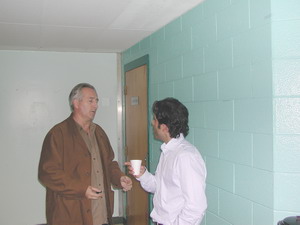
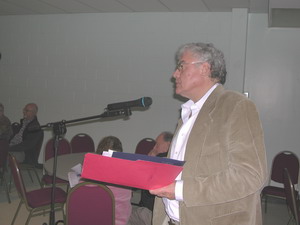

Laparoscopic surgery involves a series of smaller
incisions when compared to the more
common Open Radical Prostatectomy. This technique provides several
benefits including
reduced blood loss and transfusion rates as well as reduced recuperation
times as compared
to open surgery. To perform Laparoscopic Surgery Carbon Dioxide Gas is
injected into
the abdominal cavity and telescopic instruments are used to perform the
surgery. While earlier
results were inferior to open surgery, experience and techniques have
improved to the point
that about 50% of Prostatectomy’s were performed Laparoscopically in the
U.S. last year.
One of the early complaints some surgeons had with
Laparoscopic Surgery was that it took
longer and required that the surgeon remain in an awkward position for a
considerable
length of time. As experience levels increased, the surgical times
improved to approach that
of open surgery. This was further enhanced by the introduction of
Robotic equipment that
offered surgeons more degrees of freedom, a binocular 3D virtualization
of the operating site
and far better ergonomics for the surgeon at the same time during the
procedure.
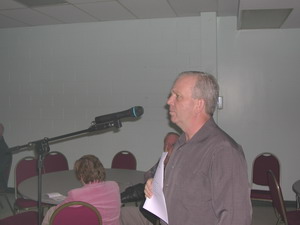
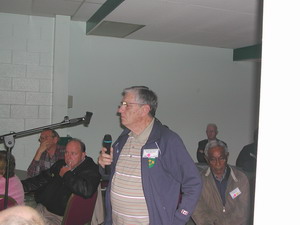
The main downside of Robotic Assisted Surgery is its
cost (1.6 Million dollars per unit & high
maintenance costs). Some surgeons also find that there is less feel than
with conventional
instruments. Unfortunately, there is currently no solid infrastructure
to train surgeons in its use
which further limits the rate at which new surgeons can adopt the new
technology.
Dr. Finelli also went on to describe
the fairly new treatment known as HIFU. This potentially
offers an even less invasive technique where a rectal probe focuses high
intensity ultrasound
waves to destroy the cancerous tissue within the prostate gland. The
technique does not require
a General Anesthetic and can be done with the aid of a spinal block. If
necessary, the procedure
can easily be repeated.
At present, this technique is generally limited to low
risk patients and it is not covered by the
health system so there is a charge for the procedure. Studies have yet
to provide long term
comparative results available for Surgery and Radiotherapy. Some of the
more common side
effects of the procedure are a sense of urgency and urinary frequency.
The use of HIFU will
likely increase as experience and technique improve and long terms
results become available.
The question and answer period provided the group with
further clarification of
both the benefits and difficulties of introducing these treatments to
the general public.
Our thanks to Dr. Tony Finelli for an informative, High-Tech presentation with great videos plus an interactive Question and Answer session greatly benefiting our members.
AUDIO & SLIDES DOWNLOADS
AUDIO:
NO AUDIO
AVAILABLE
SLIDES:
[We have not received the slides for this session. They may have been
withheld for confidentiality reasons and will be posted up here if
received]
PROSTATE CANCER AWARENESS!
Prostate Cancer Canada Network - Brampton
·
Tel: 905- 453-3038 · Fax: 905-840-9474 · Email: info@pccnbrampton.com

